10 Best Grain Foods For Weight Loss to Eat Daily
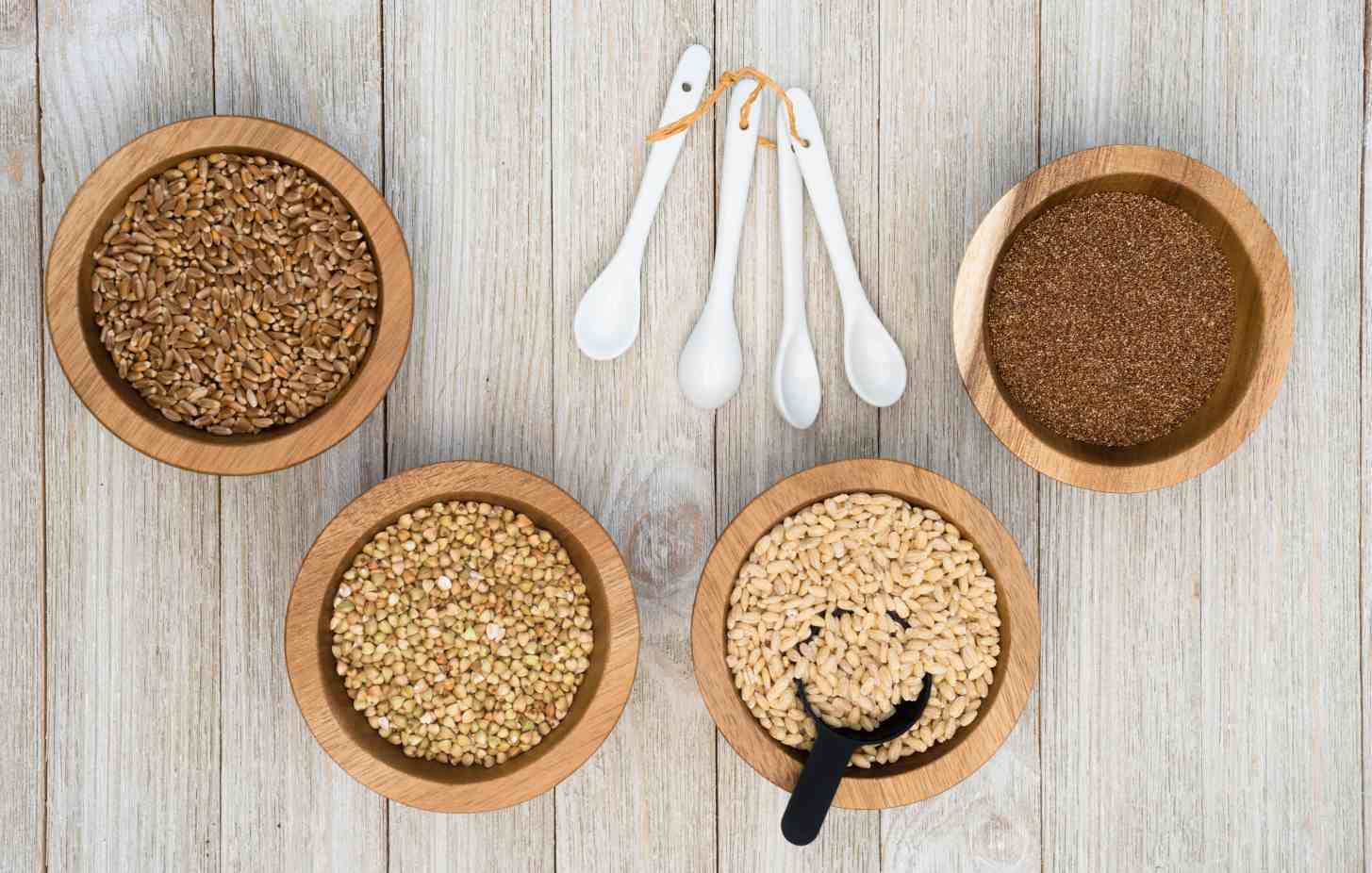
The right food is essential to losing weight. In a weight loss program, whole grains have more fibre and essential nutrients that give prolonged energy, making them a perfect fit. Reducing weight requires controlling hunger pangs. A balanced diet, including vegetables, fruits, grains, nuts, and seeds, constitutes a wholesome meal. This removes the constant desire to eat snacks or junk foods.
At the same time, a diet rich in fibre and low in calories is perfect for weight loss. Check the curated list of top grains for weight loss underneath if you want to shed some pounds.
Keep scrolling!

Table of Contents

10 Best Grains for Weight Loss
Weight loss is a challenging task that requires regular exercise and healthy food. Including grains in the diet supports health and weight goals.
Here is a list of the top grains for weight loss that you can include in your meal plan:
1. Barley
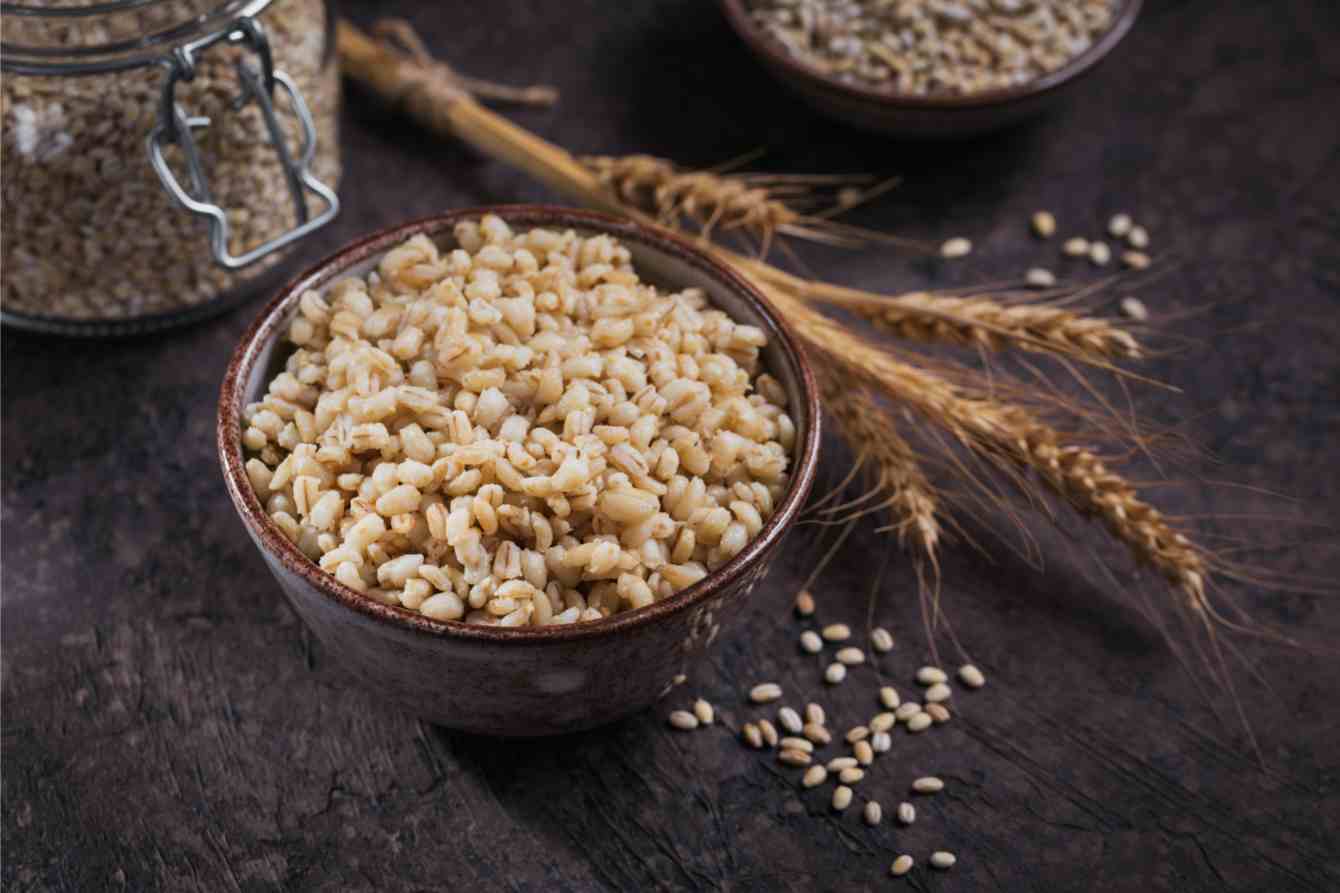
Barley has a chewy consistency and a nutty flavour that complement many dishes. It is low in calories, which makes it perfect for losing weight. Consuming barley products helps lower cholesterol levels. To make the diet effective, an individual needs to invest in whole-grain barley. Usually, it is available in flour form that can be baked as bread or included in dishes.
Nutritional Value (1/4 cup, cooked)
- Calories: 45
- Carbohydrates: 10g
- Fibre: 1.6g
- Calcium: 7mg
- Iron: 0.4mg
How Barley Helps Lose Weight?
- Barley has a high fibre content, which helps maintain a stable blood sugar level.
- It also makes you feel full for longer, reducing net calorie intake.
2. Brown Rice
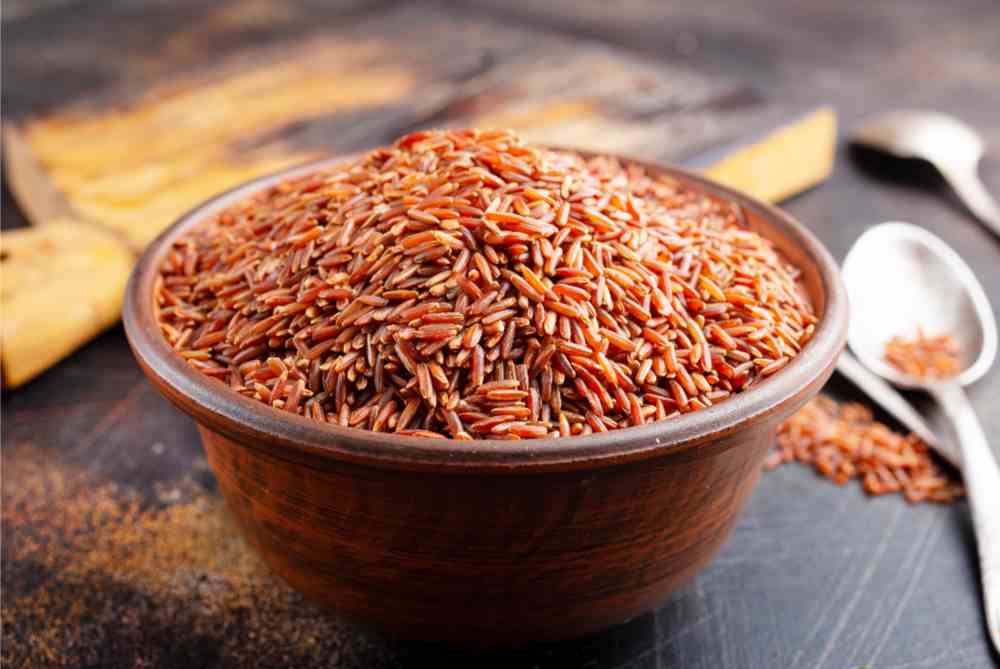
Brown rice is a rich source of dietary fibre that protects the body from cardiovascular diseases. It contains multiple vitamins and minerals that support a healthy body and mind. Brown rice has magnesium, antioxidants, vitamins, phosphorus and selenium.
Since it is high in fibre, consuming a small amount satisfies the appetite. One can also include healthy rice variants like black and red rice into their diet. These grains are high in antioxidants.
Nutritional Value (1/4 cup, cooked)
- Calories: 54
- Carbohydrates: 11.6g
- Fibre: 0.5g
- Calcium: 5mg
- Iron: 0.4mg
How Brown Rice Helps Lose Weight?
- It comprises complex carbohydrates that digest slowly and give long-lasting energy, thus controlling overeating and snacking between meals.
- Rich in fibre, it aids digestion, thereby promoting a healthy digestive system.
3. Finger Millets
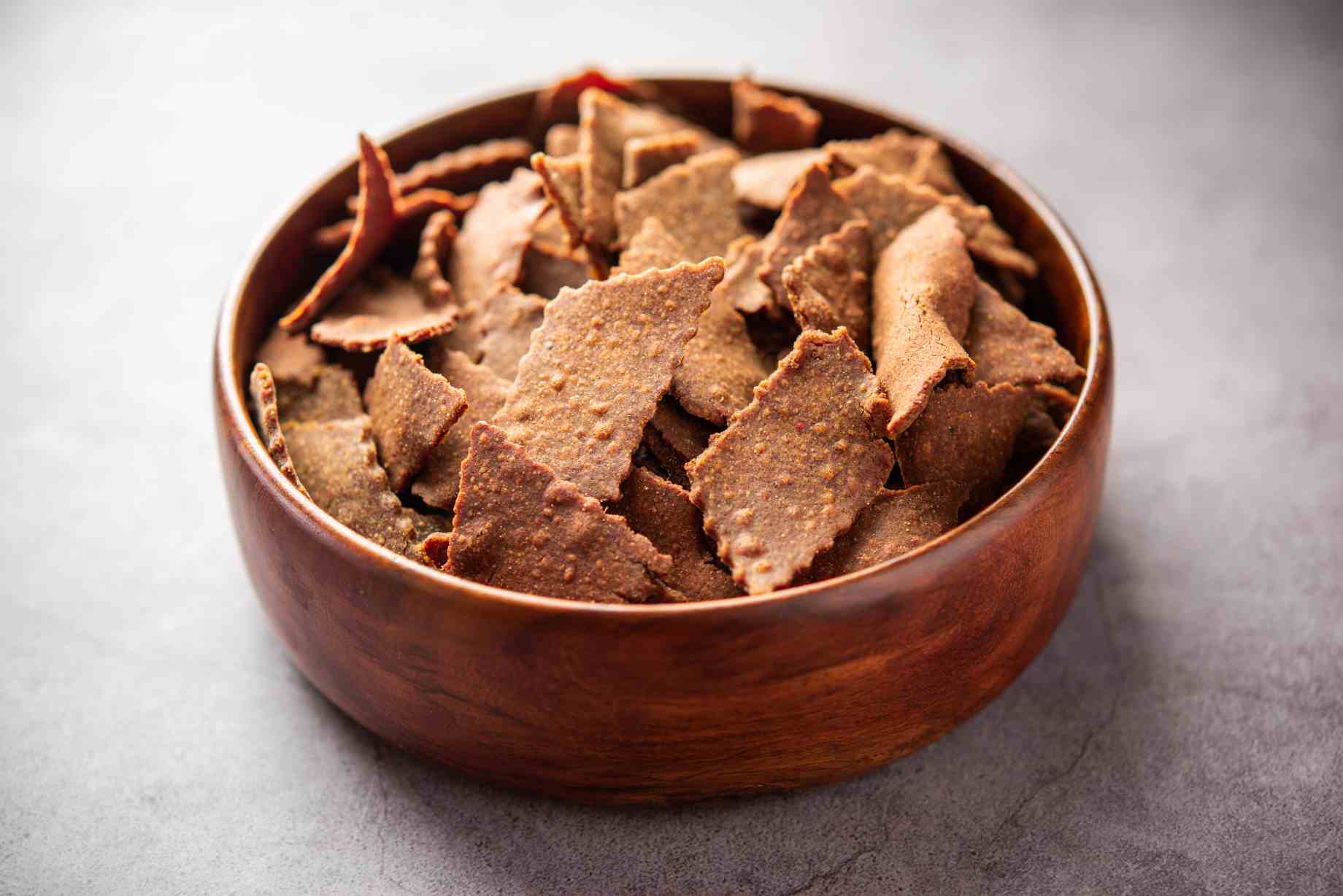
Finger millet or ragi make Indian bread, such as roti, paratha, etc. It is rich in vitamin D and calcium, which makes it an ideal food for bone strength. In addition, ragi is a highly nutritious gluten-free grain.
Consuming ragi can help an individual prevent medical conditions like diabetes and anaemia. Its low-calorie properties make it perfect for a weight-loss diet.
Nutritional Value (1/4 cup, cooked)
- Calories: 119
- Carbohydrates: 25g
- Fibre: 3g
- Calcium: 60mg
- Iron: 1.3mg
How Finger Millets Help Lose Weight?
- Fiber-rich and calcium-rich, it promotes bone health and aids digestion.
- Its low glycemic index slows digestion, resulting in stable blood sugar levels and reduced cravings for sugary snacks.
4. Oats
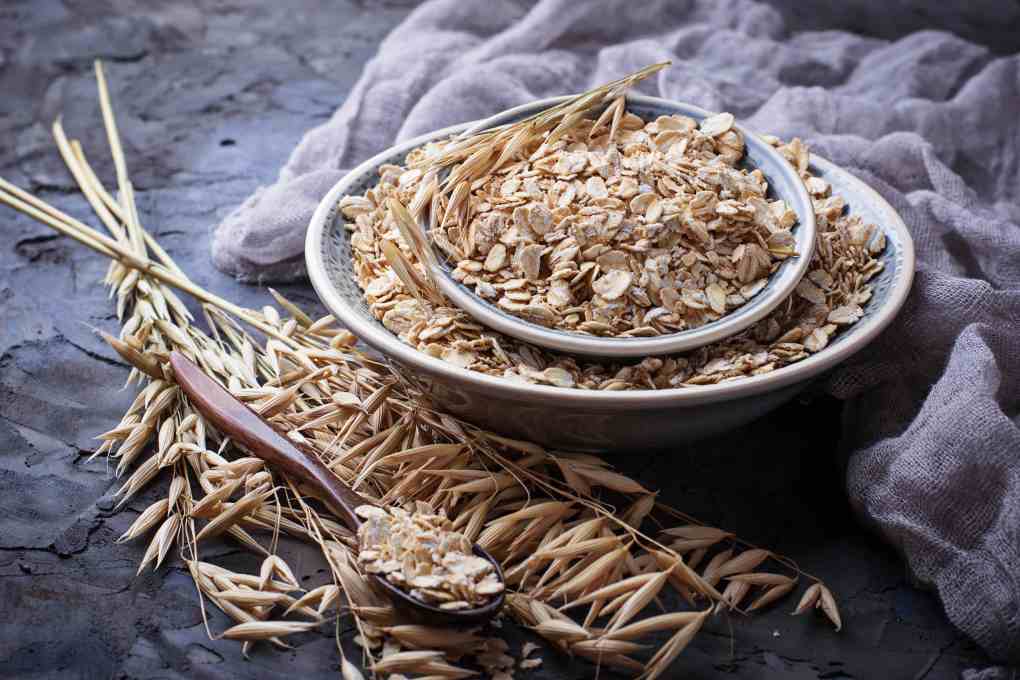
Many health enthusiasts consider oats their go-to diet meal. This super grain contains avenanthramide, an antioxidant that protects cardiovascular health. It is rich in beta-glucan fibre. Moreover, it has water-absorbing properties that swell the stomach and leave a feeling of fullness. Oats can be consumed as cereals or mixed with regular dishes to give a zing.
Nutritional Value (1/4 cup, dry)
- Calories: 74
- Carbohydrates: 12.5g
- Fibre: 2g
- Calcium: 12mg
- Iron: 1.1mg
How Oats Help Lose Weight?
- Oats are high in soluble fibre (beta-glucan), which can help lower cholesterol levels and promote heart health.
- Beta glucan makes people feel full. Hence, it reduces appetite and supports efficient digestion processes.
5. Quinoa
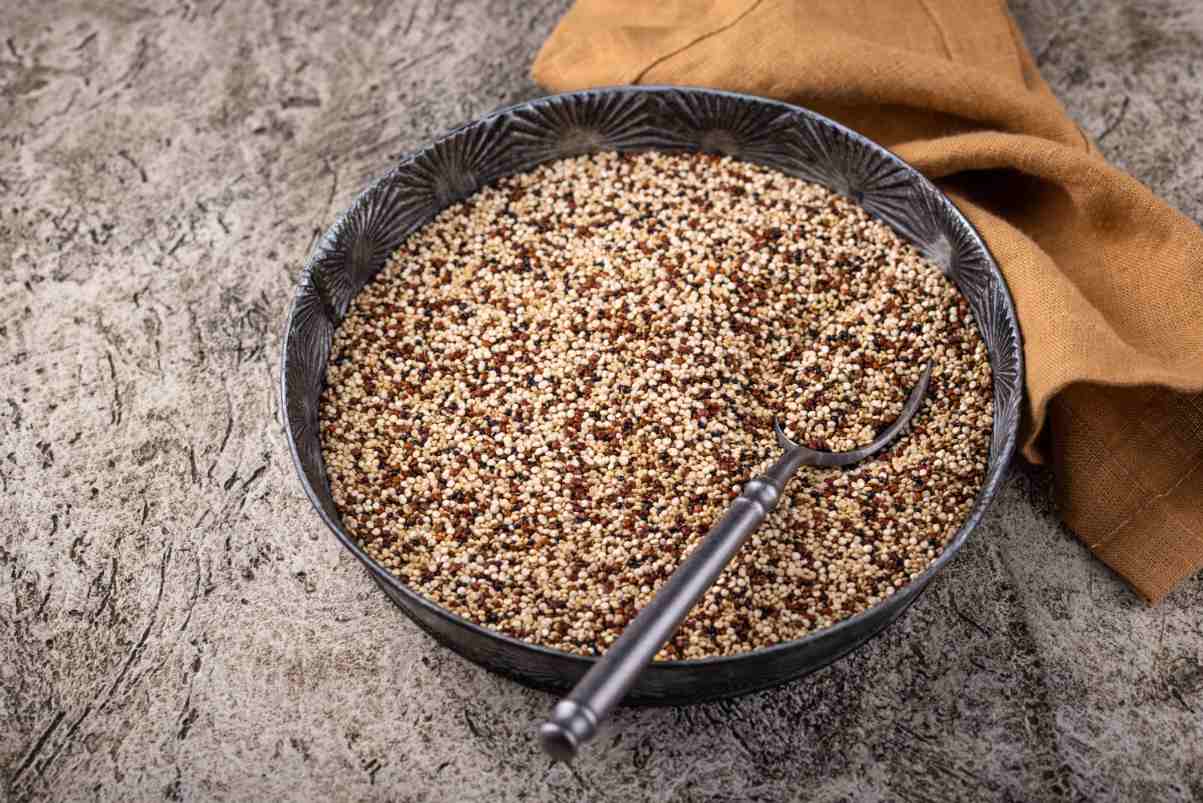
Quinoa is a tiny grain that is high in vitamin B and protein. It is an ideal food for individuals with gluten intolerance and celiac disease. It also contains omega-3 fatty acids, which are good for heart health. In addition, it has a low Glycemic Index that can avoid causing blood sugar spikes.
Nutritional Value (1/4 cup, cooked)
- Calories: 111
- Carbohydrates: 19.7g
- Fibre: 1.8g
- Calcium: 9mg
- Iron: 0.8mg
How Quinoa Helps Lose Weight?
- Quinoa contains all nine essential amino acids, making it a complete protein source.
- High protein content plus its rich fibre count elevates a feeling of satiety, thus suppressing hunger, which is key in weight management.
6. Farro
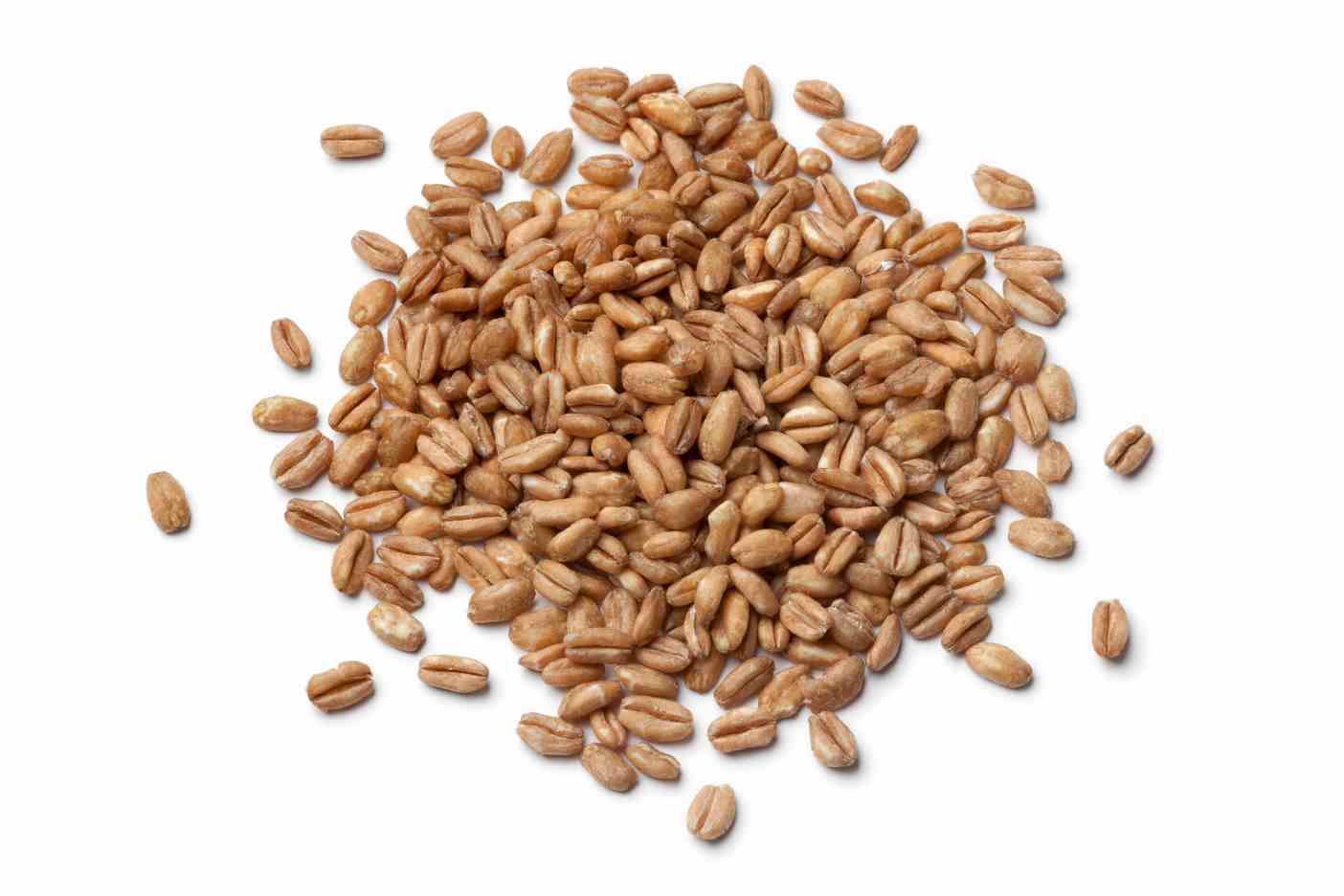
Farro is an ancient grain with a nutty flavour and chewy texture. It can be used to make salads, soups, or even risotto. Our forefathers commonly used this grain.
Nutritional Value (1/4 cup, cooked)
- Calories: 47
- Carbohydrates: 9g
- Fibre: 1.5g
- Calcium: 5mg
- Iron: 0.3mg
How Farro Help Lose Weight?
- High in fibre, farro fills you up and keeps your appetite at bay.
- It provides sustained energy due to its complex carbohydrates, which reduce cravings while promoting steady release since they are made up of slowly digestible sugars.
7. Buckwheat
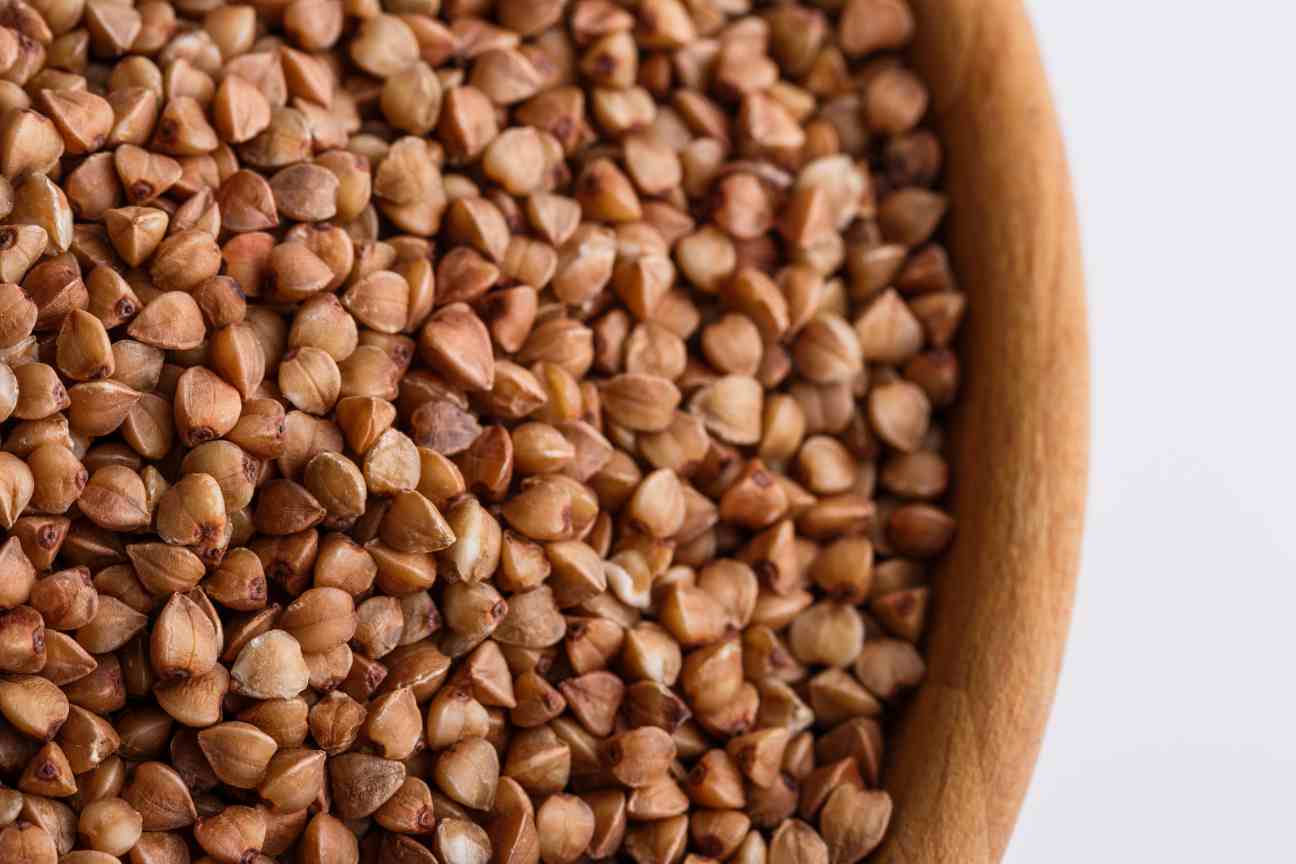
Despite its name, buckwheat is gluten-free and not related to wheat. It has a distinctive nutty taste and is commonly used as porridge, pancakes, or a substitute for grains in various dishes.
Nutritional Value (1/4 cup, cooked)
- Calories: 37
- Carbohydrates: 8g
- Fibre: 0.8g
- Calcium: 3mg
- Iron: 0.4mg
How Buckwheat Helps Lose Weight?
- With low calories and high fibre content, buckwheat can be an option for weight management because it will keep you full throughout the day.
- It contains resistant starch, which aids in digestion and gives a feeling of satisfaction.
8. Bulgur
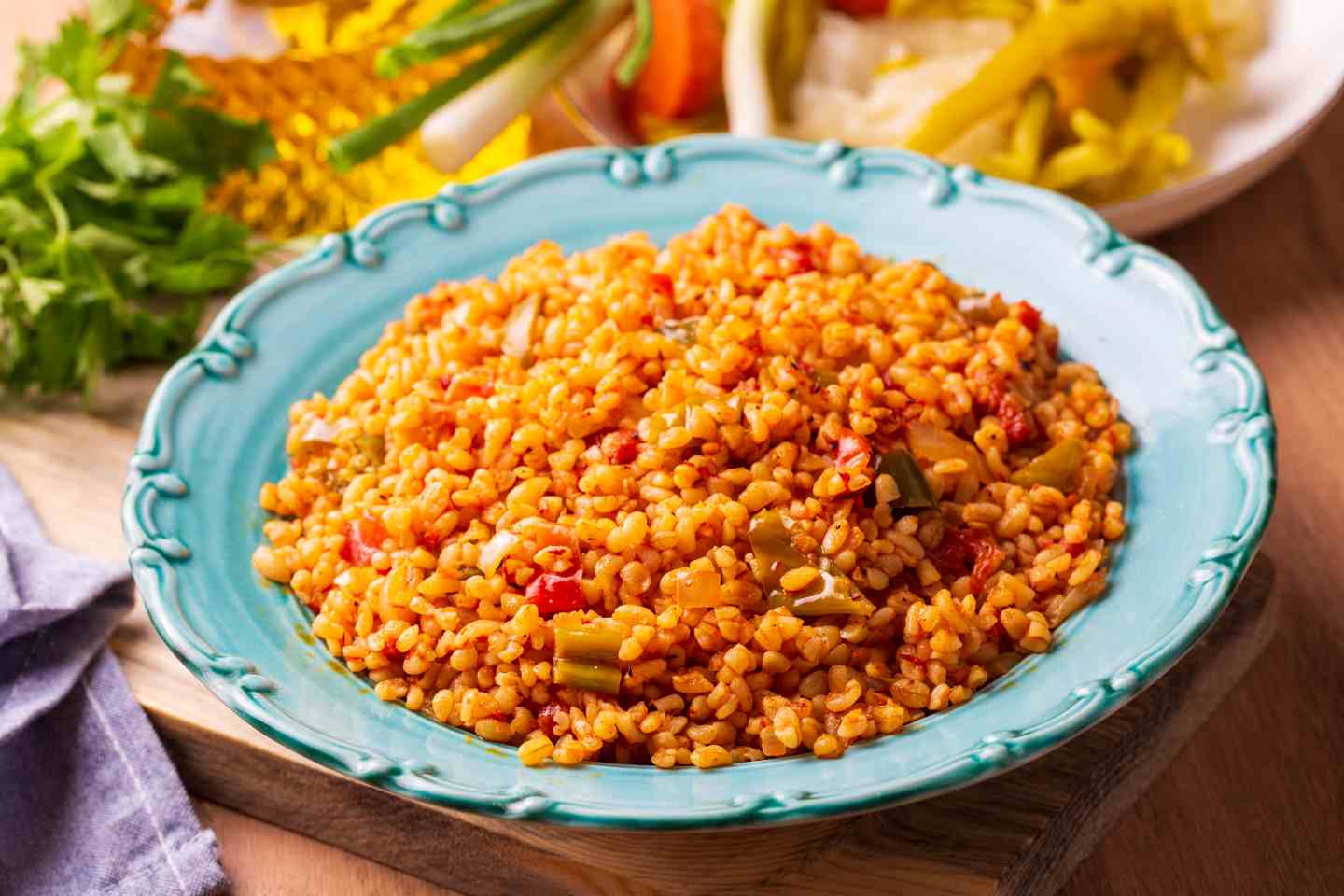
Bulgur is made from whole wheat that has been cracked and partially cooked. It tastes light and nutty and is commonly used for Middle Eastern dishes like pilafs and tabbouleh.
Nutritional Value (1/4 cup, cooked)
- Calories: 34
- Carbohydrates: 7g
- Fibre: 1.2g
- Calcium: 6mg
- Iron: 0.3mg
How Bulgur Helps Lose Weight?
- Bulgur has less fat or calories than other foods, yet it provides more nutrients. Thus, it’s a very healthy choice since it’s also filling.
- Its low glycemic index helps regulate blood sugar levels, reducing cravings and promoting stable energy levels.
9. Amaranth
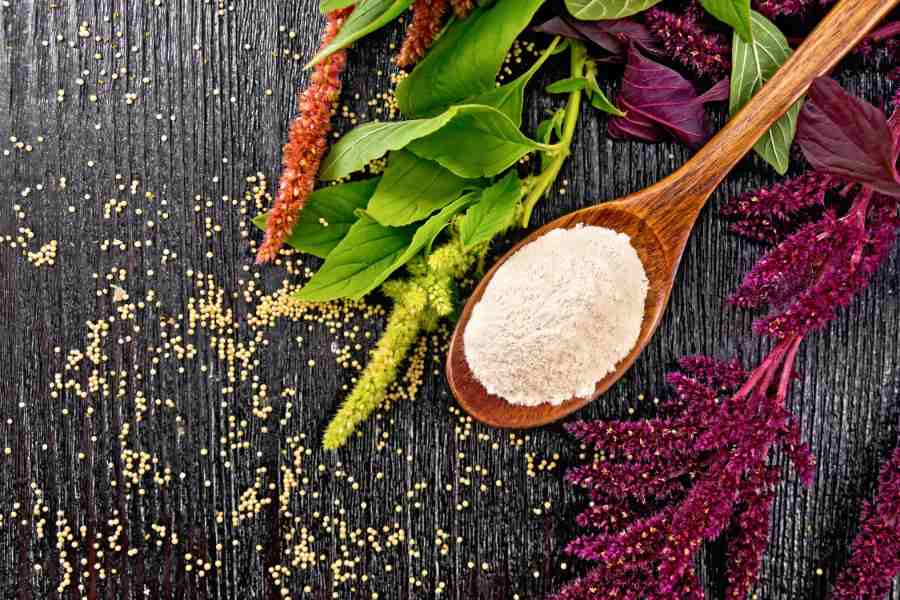
Amaranth is pepper-flavoured cereal without gluten. This grain has been cultivated for centuries due to its great nutritional value.
Nutritional Value (1/4 cup, cooked)
- Calories: 59
- Carbohydrates: 10.7g
- Fibre: 1.7g
- Calcium: 12mg
- Iron: 1.5mg
How Amaranth Help Lose Weight?
- Completing your meal with amaranth supports satiety because protein and fibre are present, so there is no need to get more calories from other foods.
- It contributes towards overall health by containing required minerals as well as vitamins.
10. Freekeh
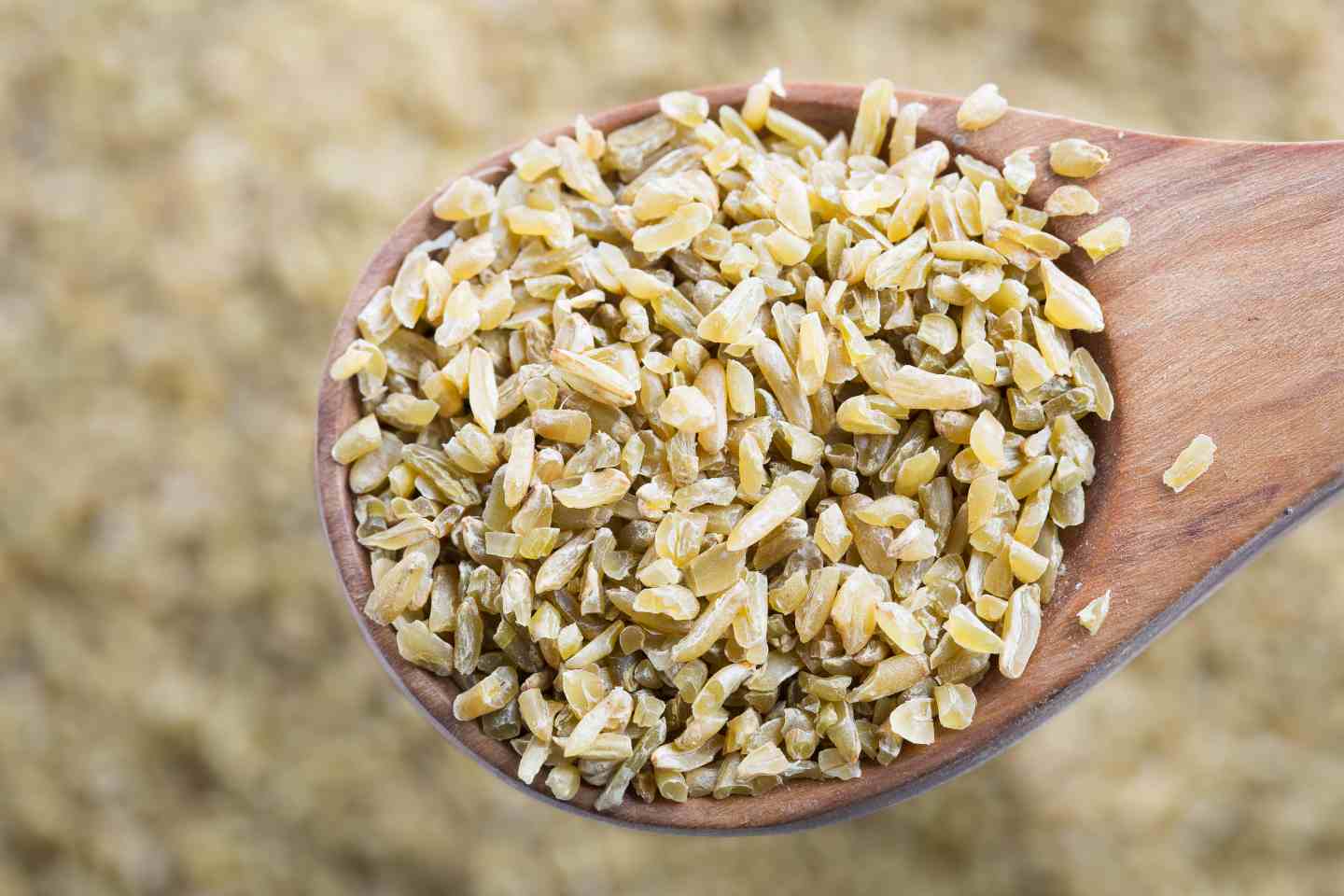
Freekeh refers to roasted green wheat, which is slightly smoky-flavoured and has a chewy texture. This has remained a staple food in Middle Eastern cuisine for centuries.
Nutritional Value (1/4 cup, cooked)
- Calories: 43
- Carbohydrates: 8.5g
- Fibre: 1.9g
- Calcium: 8mg
- Iron: 0.4mg
How Freekeh Helps in Weight Loss?
- It contains protein and essential nutrients, supporting muscle maintenance and metabolic health.
- For this reason, adding enough fibre to your diet to lose weight with freekeh is beneficial.
These are some of the top whole-grain diets for weight loss. Individuals can find these grains in almost every grocery shop or online. However, before investing in a grain of your choice, it is very important to consult a medical practitioner.
They can analyse your medical conditions and Body Mass Index to plan a diet accordingly. Nevertheless, certain starchy grains must be avoided or consumed in a low portion for weight management.
How Does Eating Grains Help in Weight Loss?
The golden rule to weight loss is eating right, not eating less. An individual should consume a balanced diet that is rich in nutrients. However, many individuals avoid including grains in their diet due to the misconception of carb content.
In reality, many grains are low in calories and rich in fibre. Variants like whole grains help with weight management by keeping the stomach full, which reduces the urge to consume snacks between meals.
Apart from fibres, some grains are rich in protein, vitamins, minerals and iron. An individual can consume these grains in whole or unprocessed form. Barley, buckwheat, millets, brown rice, etc., are low-calorie grains for weight loss.
Here is a detailed explanation of the best grains for weight loss that you must include in your diet to lose weight.
Tips for Weight Loss While Consuming Grains
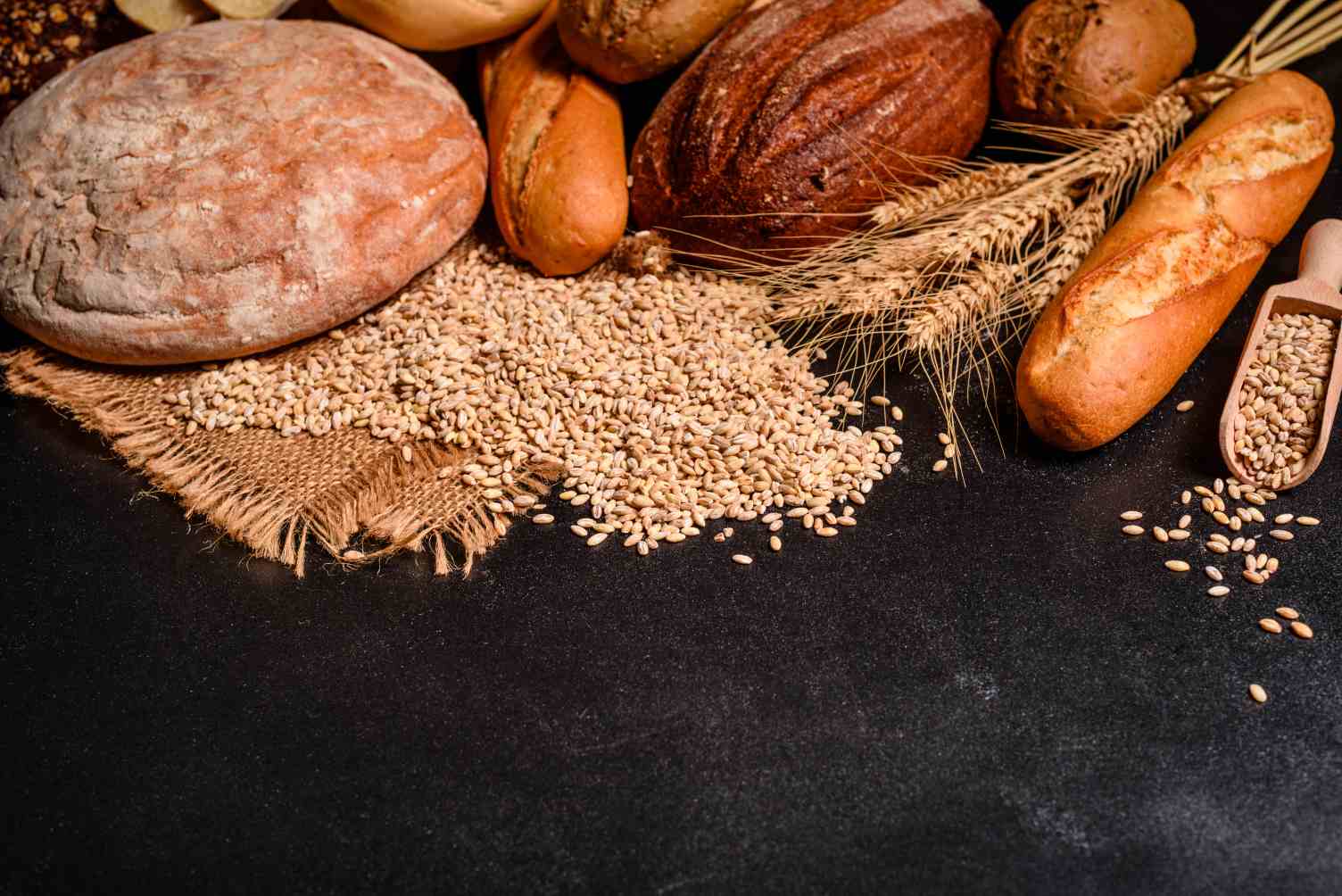
Grains are staple foods in many cultures globally because they provide energy, fibre, and essential nutrients. Here are some practical tips to help you lose weight using grain consumption.
- Choose Whole Grains: Instead of refined grains, choose whole grains like brown rice, quinoa, oats, barley, and farro. These grains do not change their fibre content or nutrient value, thus aiding good digestion.
- Watch Portion Sizes: To avoid overeating, note the size of your meals. When cooking these foods, use the indicated amount, such as a 1/4th to 1/2th cup meal.
- Incorporate High-Fibre Grains: Go for high-fibre cereals with oatmeal, quinoa, and barley, which help sustain fullness and reduce overall calorie consumption.
- Avoid Added Sugars and Fats: Be careful about sugar or fat added to cereal products like flavoured oatmeal or buttery rice. Opt for plain versions instead and add flavouring using spices or fresh herbs.
- Stay Hydrated: Drink plenty of water throughout the day. Water is absorbed by fibre-rich grains, which helps in digestion and makes one feel satisfied.
- Limit Processed Grain Products: Reducing the consumption of processed corn foods, such as muffins and pastries, is also essential. Many have little nutritional value but high-calorie content.
Grains to Avoid During Weight Loss
Refined grains must be avoided by individuals who target toned muscle and a healthy body. They contain high calories and low nutrition, increase blood sugar levels, and add weight. Some grains must also be avoided by individuals trying to lose weight and those with cardiovascular issues.
Individuals with metabolic syndrome, insulin resistance, or diabetes should avoid the mentioned grains. It is advised to consult a dietician regarding grain consumption and quantity.
Regarding weight loss, an individual should consume an equal proportion of whole grains and fibre-cruciferous vegetables. The meal should be cooked in low-calorie oil to derive maximum nutrition from the food items. Consuming fresh fruit and juices would also help achieve weight loss goals.
Now that you know about weight loss and the benefits of grains start preparing a diet chart today!
Important Health Insurance Plans for Every Stage of Life














